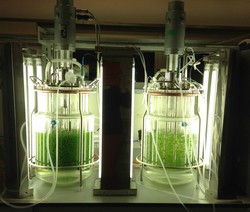Monitoring air pollution with moss
Mosses and lichens can be used to monitor air pollutants since they acquire all their nutrients and water from the air around them. In light of strict new ambient air quality legislation in the EU, an inexpensive and reliable tool based on moss would be ideal to monitor airborne pollutants. The MOSSCLONE(opens in new window) (Creating and testing a method for controlling the air quality based on a new biotechnological tool. Use of a devitalized moss clone as passive contaminant sensor) project developed a way to produce moss on an industrial scale. The project also compared its new moss-based bio-monitoring product to currently available, non-biological air monitoring systems. Project partners engineered and isolated a clone of the moss Sphagnum palustre, and studied its growth and air monitoring properties in detail. Results indicated that this moss would be more sensitive than currently available air-monitoring tools. A specially designed bioreactor was built for large-scale production of the S. palustre clone, which is placed in bags for distribution once grown. The approach of using moss bags was tested on site in several countries. The created biotool ′mossphere′ has clear competitive advantages over alternative methods of monitoring. It is cheaper, has lower environmental impacts and can monitor numerous pollutants using the same device. It can also measure some pollutants that cannot be monitored using current technology. In addition, the results of MOSSCLONE will boost basic research and eco-innovation for years to come and enrich scientists’ knowledge of mosses. This will lead to the development of new clones, improve culture conditions in moss bioreactors and help in the analysis of new moss species. MOSSCLONE project produced an efficient and low-cost air-monitoring tool that can be easily implemented on a large scale. This will help EU states comply with strict new legislation and result in improved air quality. In addition, the availability of higher quality data on air pollution will enable results to be compared with epidemiological data.







